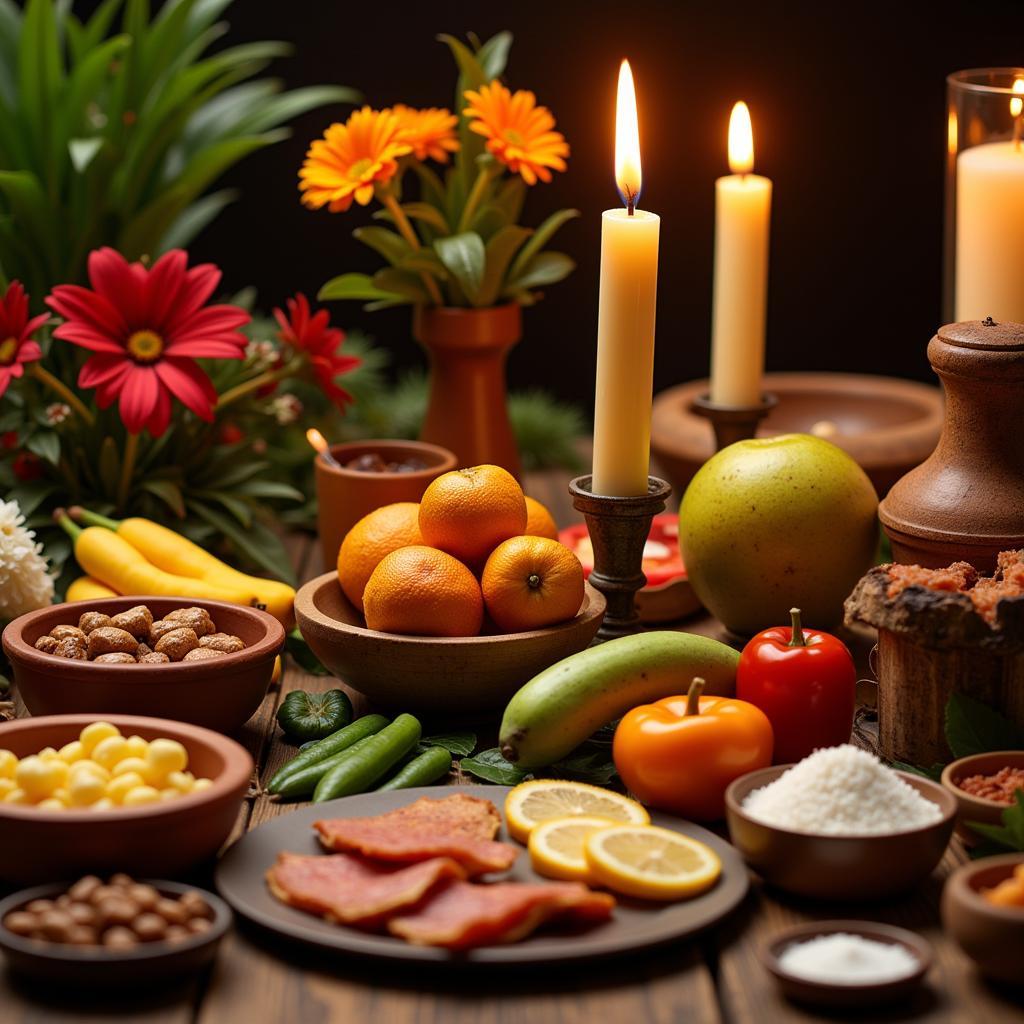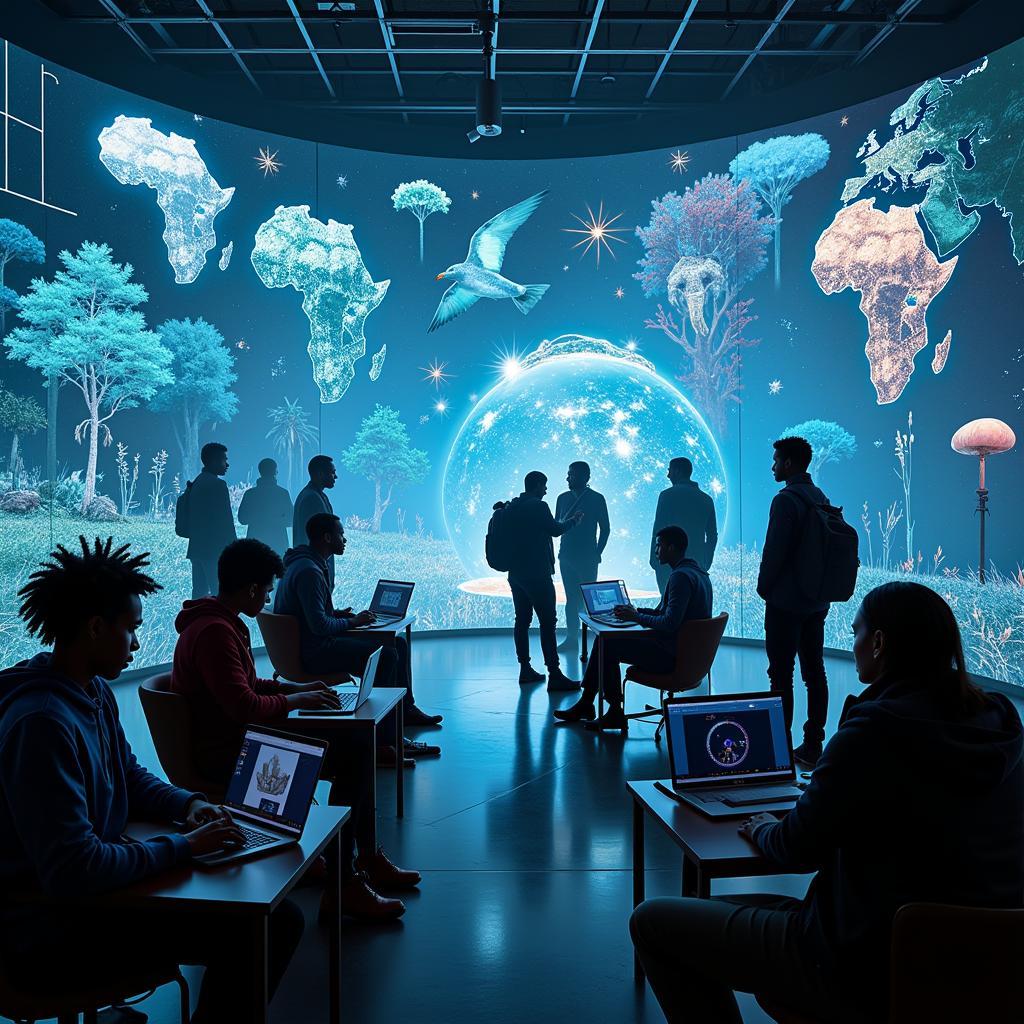Exploring the Significance of African Tribal Images
African Tribal Images offer a captivating glimpse into the rich tapestry of cultures, traditions, and artistic expressions across the African continent. These images, often imbued with deep symbolism and meaning, reflect the diverse identities and histories of various African tribes. Understanding the context and significance behind these images is crucial to appreciating the cultural heritage they represent. Let’s delve into the fascinating world of African tribal images and uncover their stories.
The visual language of African tribal imagery encompasses a vast array of forms, from intricate body painting and elaborate masks to stunning sculptures and vibrant textiles. These artistic expressions are not merely decorative; they play integral roles in various aspects of tribal life, including rituals, ceremonies, storytelling, and social hierarchies. For instance, some African face paint history demonstrates its significance in marking social status and ceremonial roles. Check out more on african face paint history.
Unveiling the Symbolism within African Tribal Images
African tribal images are rich in symbolism, often drawing inspiration from nature, ancestral spirits, and the cosmos. Animals, plants, and celestial bodies are frequently depicted, representing specific qualities, beliefs, or spiritual connections. For example, the image of a lion might symbolize strength and leadership, while a serpent could represent transformation and healing. These symbolic representations are woven into the very fabric of tribal life, communicating profound messages and reinforcing cultural values.
The Role of African Tribal Images in Rituals and Ceremonies
In many African cultures, rituals and ceremonies are integral to community life. African tribal images play a central role in these events, serving as conduits to the spiritual realm and embodying ancestral power. Masks, often carved with intricate details and adorned with feathers, beads, or shells, are frequently used in dances and ceremonies to represent deities, spirits, or ancestors. Similarly, body painting, often utilizing natural pigments derived from plants and minerals, can signify a person’s status within the tribe or mark a significant life event.
The power and beauty of African tribal art extend to clothing and adornment, reflecting pride in heritage. If you’re interested in exploring contemporary expressions of African heritage, you might find african american pride tattoos insightful.
Exploring the Diversity of African Tribal Images
The vastness of the African continent means that there is no single, monolithic “African tribal image.” Each tribe and region boasts its unique artistic style, reflecting its specific history, beliefs, and environment. From the bold geometric patterns of the Ndebele people of South Africa to the intricate scarification practices of certain Ethiopian tribes, the diversity of African tribal images is a testament to the continent’s rich cultural tapestry.
Preserving and Appreciating African Tribal Heritage
As the world becomes increasingly interconnected, it is more important than ever to preserve and appreciate the unique cultural heritage embodied in African tribal images. These images are not merely artifacts of the past; they are living expressions of cultural identity that continue to evolve and inspire. Museums, cultural centers, and online resources play a crucial role in documenting and sharing these artistic traditions with a wider audience. Understanding the stories behind these images helps us to connect with the diverse communities that have shaped the African continent.
 African Tribal Painting Depicting Cultural Symbolism
African Tribal Painting Depicting Cultural Symbolism
Traditional African hairstyles are another compelling aspect of tribal imagery. Learn more about contemporary interpretations of these styles at african l ady hairstyle.
The Evolution of African Tribal Images in Contemporary Art
African tribal images have had a profound influence on contemporary art, both within Africa and globally. Many contemporary artists draw inspiration from traditional motifs and techniques, reinterpreting them in new and innovative ways. This cross-cultural exchange enriches the artistic landscape and ensures that the legacy of African tribal imagery continues to thrive in the 21st century and beyond.
 Contemporary African Art Inspired by Tribal Imagery
Contemporary African Art Inspired by Tribal Imagery
If you’re interested in seeing how these tribal images translate into fashion design, you can explore some fascinating sketches at african dress sketch. For a broader look at the beauty of African imagery, consider visiting african beautiful images.
In conclusion, African tribal images offer a profound insight into the diverse cultures and traditions of the African continent. By understanding the symbolism, history, and artistic techniques behind these images, we can gain a deeper appreciation for the rich cultural heritage they represent. Exploring african tribal images is a journey of discovery, unveiling the stories, beliefs, and artistic expressions of vibrant communities across Africa.
Expert Insight: Dr. Abena Osei, a renowned anthropologist specializing in African art and culture, notes, “African tribal images are not static representations; they are dynamic expressions of cultural identity that continue to evolve and adapt.”
Expert Insight: Professor Kwame Asante, a respected historian of African art, adds, “The intricate symbolism within African tribal images provides a window into the complex worldview and spiritual beliefs of diverse African communities.”
Expert Insight: Dr. Fatima Mbaye, an expert in African textile traditions, emphasizes, “The use of color and pattern in African tribal images is not merely decorative; it conveys profound meaning and social significance.”
FAQ
- What is the significance of masks in African tribal culture?
- How are natural materials used in creating African tribal images?
- What are some common symbols found in African tribal art?
- How do African tribal images reflect social hierarchies and roles?
- What is the impact of globalization on the preservation of African tribal art?
- How are African tribal images being reinterpreted in contemporary art?
- Where can I learn more about specific African tribal art forms?
Need help understanding more about African Tribal Images? Explore these related questions: What are the ethical considerations when studying or displaying African tribal images? How can we support the preservation of African cultural heritage? What is the role of museums and cultural institutions in promoting understanding of African art?
For more information and support, please contact us:
Phone: +255768904061
Email: kaka.mag@gmail.com
Address: Mbarali DC Mawindi, Kangaga, Tanzania
Our customer service team is available 24/7.


